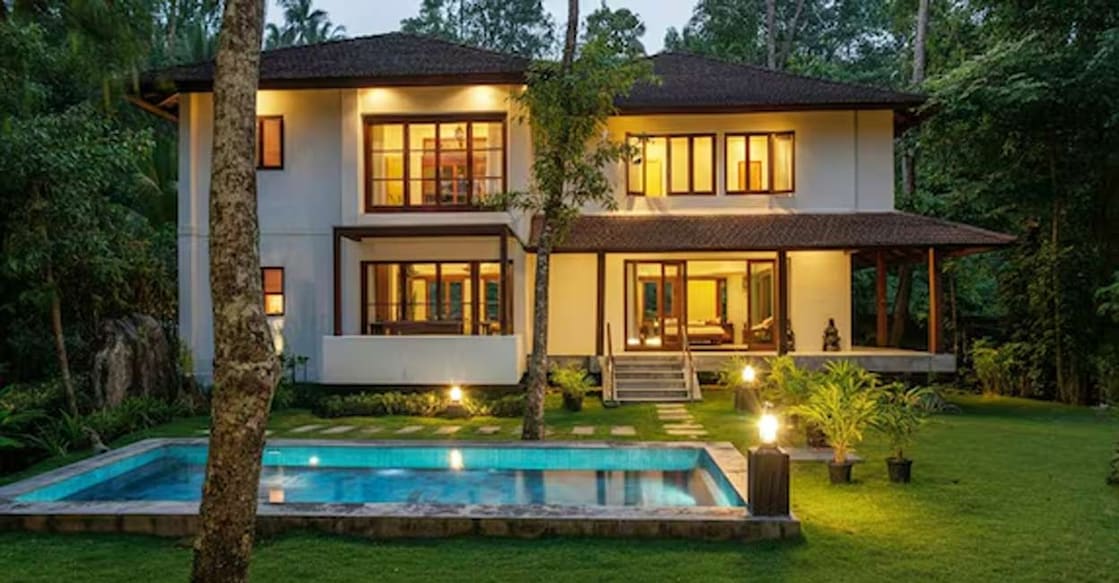This is how you pay property tax, luxury tax of buildings in Kerala

Mail This Article
Most people confuse building tax with property tax, and falsely believe that the former is levied by the local bodies. However, now, the local bodies collect property tax and not building tax.
Who collects the building tax?
It is the revenue department that collects the building tax which is a one-time tax. The owner of the building (all kinds of buildings) should pay this tax in the revenue department as soon as the construction is over.
There is no building tax for residential buildings that have an area of up to 100 sqft and up to 50 sqft for other buildings. In the case of residential buildings with an area of up to 100 – 150 M2, the owners need to pay Rs 1950 at the panchayat, Rs 3500 at the municipality and Rs 5200 at the corporation. It is Rs 3900, Rs 7000 and Rs 10,500 at the panchayat, municipality and corporation respectively for buildings between 150 and 200 M2. Meanwhile, the tax rate for buildings between 200 and 250 M2 is Rs 7800 at the panchayat, Rs 14,000 at the municipality and Rs 21,000 at the corporation.
If the area of the building exceeds 250 M2, then an additional amount of Rs 1560 will be charged at the panchayat, Rs 3100 at the municipality and 3900 at the corporation, for every 10 square metre, besides the rate up to 250 M2.
All other buildings with an area between 50 and 75 M2 will have a tax rate of Rs 1950 at panchayat, Rs 3900 at the municipality and Rs 7800 at the corporation level. For buildings with an area between 75 and 100 M2 will have Rs 2952, Rs 5800 and Rs 11,700 at the panchayat, municipality and corporation respectively. The tax rate for buildings between 100 and 150 M2 will have a tax rate of Rs 5850 at the panchayat, Rs 11,700 at the municipality and Rs 23,400 at the corporation.
Meanwhile, it will be Rs 11,700 at the panchayat, Rs 23,400 at the municipality and Rs 46,800 at the corporation level for buildings with an area between 150 and 200 M2. The owner of buildings up to 200 – 250 M2 will have to pay a building tax of Rs 23,400 at the panchayat, Rs 46,800 at the municipality and 70,200 at the corporation.
If the area of the building exceeds 250 M2, then a tax amount of Rs 2340 at the panchayat, Rs 4600 at the municipality and Rs 5800 at the corporation need to be paid for every 10 M2, in addition to the tax rate up to 250 M2.
The above taxes need to be paid as a one-time payment and are not yearly taxes. Besides, there is also an option for the owner to pay this as instalments.
However, in the case of residential buildings, if the area exceeds 278.7 Me (3000 sqft), then a yearly luxury tax needs to be paid. These tax rates are as follows:
278.70 – 464.50 M2 (3000 – 5000 sqft) – Rs 5000
464.5 – 696. 75 M2 (5000 – 7500 sqft) – Rs 75000
696.75 – 929.00 M2 (7500 – 10,000 sqft) – Rs 10,000
Rs 1,25,000 will be levied as luxury tax for all residential buildings above 929 M2 (10,000 sqft).
The luxury tax is treated as same by all the local bodies. It must be noted that the area of the car porch isn’t added to the total area of the building while determining the building tax.
Meanwhile, the luxury tax is levied only for residential buildings and not for other buildings. In buildings with more than one residential unit, the area of each unit is considered to determine the luxury tax. However, if more than one unit is merged to form a single residential unit, then all the units would be considered as one. The luxury tax could be paid for five years and might even get a rebate of up to 20 per cent.
(The writer is an overseer with the engineering department of a local self-government body. Email-jubeeshmb@gmail.com)

